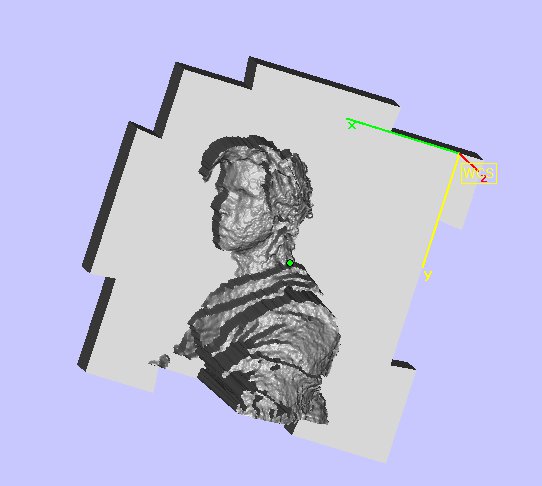Interview with Karl Willis of Interactive Fabrication
Karl Willis is the man behind the Fabricate Yourself, a tool that lets you strike a pose in front of an Xbox Kinect and then 3D prints the results. Karl works at Interactive Fabrication, a team at Carnegie Mellon University that is developing tools that let anyone design for digital fabrication. The image above is a screenshot of Karl”s Kinect scan and the image below is a point cloud of the scan. We virtually sat down with Karl so he could tell us about his work on Fabricate Yourself.
Who made this?
The programming was done by me. It was kept running during the conference with the help of Cheng Xu, Nicolas Villar and James Scott.
 Why?
The bigger picture is to explore new interfaces for digital fabrication. Specifically ones that are accessible, but still empower people to be creative. ”Fabricate Yourself” came about as we brainstormed what to do with a 3D printer Stratasys had provided us with, and how best to document the conference community.Â
I have always been a fan of Japanese Purikura – photo booths where you go to take photos with your friends, draw on the photo, then have it instantly printed. Being about to document a moment, and bring it in to the physical world is very powerful. Watching the 3D prints created with ”Fabricate Yourself” come into being, is similar to the anticipation felt when a polaroid camera image slowly appears from nothing.  Of course with 3D printing we aren”t quite able to do this ”instantly”, but the anticipation is very much the same.
There is currently a lot of hype surrounding the Kinect. Does the device live up to the hype?
 Depth sensing cameras have been around for some time (for example the ZCam was originally released in 2000) , but due to the price they did not have the kind of uptake we are seeing now.Â
A lot of people doing computer vision, who would usually use a regular camera, have switched to the Kinect because you can do much cleaner background subtraction or gesture recognition with the added depth information. So a lot of the ”kinect hacks” we are seeing could actually be implemented with a regular camera. For 3D printing there are numerous ways we can put this depth information to use.
 From the audience perspective, the Kinect does come at an ideal time. People have grown accustomed to interacting in a physical way using the Nintendo Wii or even the Apple iPhone, so developers can build upon this experience to create new interfaces.
 Do you think the Kinect is a good platform for hacking?
I hope it will become another device that people will have in their homes. Being able to plug it into their PC and use applications developed by people like us is exciting. Of course developing on the Xbox itself is still prohibitively expensive and involves a lot of red tape.
What were the reactions of people to making their own prints?
People were very excited to participate. Although we were collecting the pieces to document the event, I was constantly being asked to sell them! Perhaps we could do this next time? Eventually we might want to develop the ”3D Photo Booth.”
Recommended Articles
No related posts.




